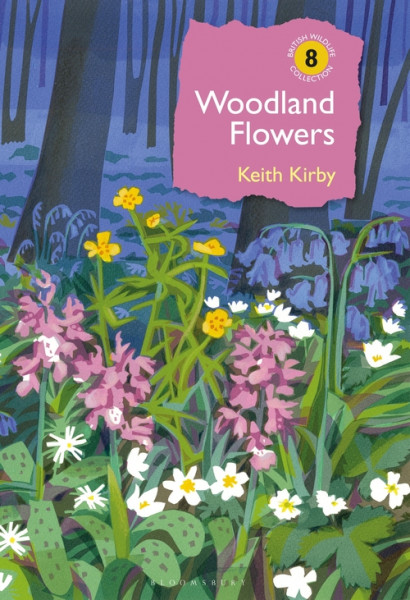
Publisher: Bloomsbury, London
Publication Year: 2020
Binding: 2
Page Count: 400
ISBN Number: 9781472949073
Price: £35.00
Woodland Flowers: Colourful Past, Uncertain Future
This is a book for anyone curious about the lives of our woodland plants, and the processes and pressures that affect them. Keith Kirby’s career as a woodland ecologist gave him vast experience of woods and their conservation throughout Britain. This is the eighth title in the British Wildlife Collection series that already has a reputation for finely produced, informative, readable books. Keith Kirby’s book is a thought provoking, personal and richly illustrated contribution to it.
The breadth of the book is somewhat greater than the title might imply. It is far more than a natural history of flowering plants. Although it focuses on plants of the woodland floor and climbers, there is much information about the trees themselves. Two chapters describe types of British woodland and their characteristic plants including the trees. The book is essentially a grand tour through the many ideas and issues relevant to understanding why, in Britain, we have the woods and woodland flora that we do. To give an indication of the scope, there are chapters dealing with the history of woodland botanising, past woodland management, what goes on below the ground, impacts of storms, grazing animals, the nature of primeval forests, the European context, newly created woodland, and human recreation. I liked the frequent use of concise illustrated essays focusing on a carefully selected plants that inform the reader about a particular concept or idea.
Perhaps surprisingly, no single chapter is devoted to climate change though it features strongly in a chapter primarily devoted to atmospheric pollution. Keith Kirby points out that there is little evidence that the distributions of woodland plants, unlike those of birds, have started to change. Perhaps this is because the microclimates are more stable inside woodland than in more open habitats, or that many plants are relatively long-lived and have the reserves to tide them over unfavourable periods. Nonetheless, in the longer term, changes are to be expected. We could see species that are currently restricted to southern England expanding northwards, and non-native species of southern climates escaping from gardens into woodland. There is a discussion of ‘nativeness’ in an earlier chapter. Given the high probability of many introductions by humans of plants in past millennia, and the fact that garden escapes can obscure natural distributions, this topic is far more complex for plants than it is for birds.
Whilst recognising that many woods have undergone damaging changes in recent decades, including the replacement of broadleaves by conifers and massive increases in grazing pressure, an optimistic outlook is adopted. Woodland flowers have fared much better than those of farmland over the last 60 years and Keith Kirby is hopeful that recent plantings will eventually give new opportunities.
Book reviewed by Rob Fuller
Buy this book




Share this page